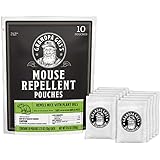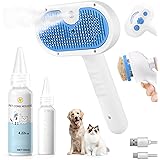Every dog owner understands the profound joy and unconditional love a canine companion brings into their life. Yet, being a dog parent also comes with significant responsibilities. Many owners initially feel overwhelmed by the needs of their furry friends. Ensuring your dog lives a long, healthy, and happy life requires a solid understanding of fundamental care principles. The video above highlights 10 crucial areas every dog owner needs to master. This comprehensive guide expands on those vital points, offering deeper insights and actionable advice to elevate your approach to essential dog care.
The Foundation of Essential Dog Care: Nurturing Your Canine Companion
Proactive care makes a real difference. In 2025, veterinarians and dog experts continue to emphasize prevention. Understanding these basics is key, whether you are a new owner or have years of experience.
1. Optimal Nutrition: Fueling Your Dog’s Health and Vitality
Food is much more than mere sustenance for your dog. It acts as their primary medicine. A poor diet leads to significant health problems. These include obesity, various allergies, and digestive distress. Conversely, a balanced diet helps your dog thrive. Look for high-quality dog food brands. These often list real meat as the first ingredient. Avoid fillers like corn, soy, or wheat. These offer minimal nutritional value.
Portion control is also critical. Overfeeding is a leading cause of obesity. This condition ranks as one of the top health problems in U.S. dogs. Obesity increases risks of diabetes, heart disease, and joint issues. Additionally, wise supplementation can boost health. Omega-3 fatty acids, for instance, dramatically improve skin and coat health. Glucosamine and chondroitin sulfates support aging joints. Always discuss supplements with your vet first. Never give dogs toxic human foods. Common culprits include chocolate, grapes, onions, and xylitol-sweetened products.
2. Regular Exercise: Building a Happy, Physically Fit Dog
Every dog needs consistent physical activity. This is true regardless of their size or breed. Exercise strengthens muscles and maintains a healthy weight. It also helps prevent destructive behaviors often linked to boredom. Small dogs typically need at least 30 minutes of daily activity. Active breeds, such as Labradors or Huskies, require 60 minutes or more. This could include vigorous walks or runs. Playtime offers both physical and mental benefits. Games like fetch, tug-of-war, or even agility drills keep dogs engaged. Indoor activities are perfect for bad weather days. Try puzzle feeders, hide-and-seek with toys, or short training sessions. A tired dog is generally a happier dog. They often bark less, chew less, and exhibit better overall behavior.
3. Proactive Veterinary Care: Prevention Saves Lives and Money
Skipping routine vet visits is a common mistake. Many dog owners underestimate the importance of preventive care. Regular checkups catch small issues early. This prevents them from becoming large, expensive problems later. Annual examinations help detect dental disease or joint pain. Vaccinations are non-negotiable for protection. Essential vaccines include rabies, distemper, and parvovirus. These protect against life-threatening diseases. Parasite prevention is equally vital. Monthly preventives guard against fleas, ticks, and heartworms. Intestinal parasites also require regular deworming. Set reminders for appointments and medications. This ensures your dog never misses a dose of crucial care.
4. Comprehensive Dental Care: Addressing the Hidden Health Threat
Many dog owners overlook dental health. However, it is a critical aspect of essential dog care. Alarmingly, over 80% of dogs develop dental disease by age three. Poor oral hygiene leads to pain and infection. This can even affect vital organs like the heart and kidneys. Brush your dog’s teeth weekly. Use a dog-safe toothbrush and toothpaste. Offer vet-approved dental chews. These can help reduce plaque and tartar buildup. Schedule professional dental cleanings as recommended by your veterinarian. Bad breath is not a normal dog characteristic. It signals potential infection or disease. Address it promptly with your vet.
5. Training and Socialization: Fostering a Well-Behaved, Confident Dog
A well-trained dog is easier to manage. They are also significantly happier and more confident. Socialization reduces fear, anxiety, and aggression. It helps your dog adapt to new environments and experiences. Basic commands like “sit,” “stay,” “come,” and “leave it” are essential. These commands can literally save your dog’s life in emergencies. Utilize positive reinforcement methods. Reward good behavior with treats, praise, or toys. This strengthens desired actions. Introduce your dog to various people, other dogs, and different environments. Start this exposure from a young age for optimal results. Consistency is paramount in training. Short, five-minute daily sessions are often more effective than one long session per week.
6. Grooming and Skincare: Beyond Just Good Looks
Regular grooming is more than cosmetic. It’s a fundamental part of your dog’s health routine. Brushing removes loose fur, dirt, and debris. It prevents painful matting and distributes natural skin oils. Bathe your dog using only dog-safe shampoos. Avoid over-bathing, which strips natural oils and dries out their skin. Nail trimming is crucial. Overgrown nails cause pain, lead to poor posture, and can even deform paws. Ear cleaning is particularly important for floppy-eared breeds. These dogs are prone to ear infections due to poor air circulation. Grooming sessions also provide a perfect opportunity to check for any unusual lumps, bumps, or parasites on their skin.
7. Mental Stimulation: Keeping Your Dog’s Mind Active and Engaged
Dogs need more than just physical exercise and good food. They crave mental challenges. Without adequate mental stimulation, boredom quickly sets in. This often leads to destructive behaviors. Puzzle toys are excellent tools. They keep your dog busy and mentally engaged. Scent games, like hiding treats around the house, activate their natural foraging instincts. Teaching new tricks keeps their brain sharp and strengthens your bond. Consider rotating toys weekly. This keeps your dog excited and prevents toy fatigue. Regular mental enrichment combats boredom and promotes overall well-being.
8. Love and Companionship: The Unseen Ingredient for a Happy Life
Dogs are inherently pack animals. They thrive on love, attention, and companionship. Quality time with your dog is invaluable. This could involve playing, cuddling, or simply relaxing together. Consistency in routines makes dogs feel secure. They thrive on predictability in their daily lives. Learn to recognize signs of stress or anxiety. These can manifest as whining, pacing, excessive licking, or destructive chewing. Addressing these issues often requires veterinary input or behavioral training. Never underestimate the profound healing power of your love and consistent presence. This aspect of essential dog care nurtures their emotional health profoundly.
9. Creating a Safe Environment: Protecting Your Pet at Home
Your home must be a sanctuary for your dog. Dog-proof your living space thoroughly. Keep harmful foods, household chemicals, and small objects out of reach. Provide a cozy, comfortable bed or crate. Dogs need their own secure space to rest and feel safe. Identification is paramount for safety. Ensure your dog always wears an ID tag with up-to-date contact information. Microchipping offers permanent identification. Register and regularly update your microchip details. A securely fenced yard is ideal. For outings, a leash is non-negotiable. These measures prevent escapes and ensure your dog’s safety.
10. Emergency Preparedness: Being Ready for the Unexpected
Accidents and medical emergencies can happen suddenly. Every responsible dog owner should be prepared. Assemble a pet first-aid kit. Include bandages, antiseptic wipes, and your veterinarian’s contact information. Know the nearest 24-hour emergency veterinary clinics. Save their location and phone number in your mobile device. Have a transport plan ready. This ensures you can safely carry your dog to the clinic if they are injured. Consider taking a pet CPR and first-aid class. This knowledge can truly be a lifesaver in critical situations. Being prepared reduces panic and improves outcomes during emergencies. This comprehensive approach to essential dog care truly covers all bases.









